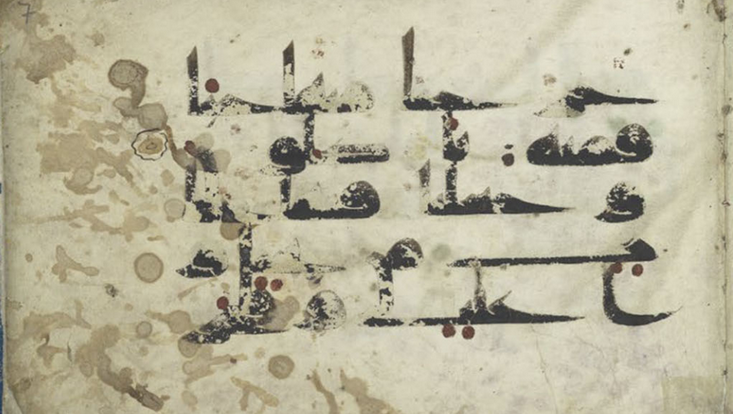Open access publicationHow Archaeometric Philology Illuminates Early Qur’anic Fragments
2 July 2025

Photo: SUB Hamburg
By integrating archaeometry and philology, four CSMC researchers are unlocking new possibilities in Qur’anic studies. In a recent publication, they applied this multidisciplinary approach to gain deeper insights into a deteriorated, multi-layered Qur’anic codex.
In the early Arabic writing, many homographs are distinguished only by the number and position of diacritical strokes and marked by vowel-dots. Whether these dots appear above, below, or after a letter fundamentally affects the reading and meaning of words. Early manuscripts often augmented these marks with colour, introducing another layer of meaning through a colour code that conveyed important semantic and linguistic distinctions.
For today’s Qur’anic studies scholars, these features present ongoing challenges. While a handful of manuscripts survive in complete form — some even including instructions for interpreting the function of their colour codes — the vast majority are incomplete or damaged. Fading or deterioration often obscures both the exact placement and colour of diacritical marks, leading to ambiguities that complicate interpretation.
A recently published article in the European Physical Journal Plus addresses this problem by presenting an innovative, multidisciplinary solution. Using a Qur’anic fragment on parchment from the Hamburg State and University Library (SUB Cod. in Scrin. 153a) as a case study, CSMC researchers Giuseppe Marotta, Alba Fedeli, Sowmeya Sathiyamani, and Claudia Colini demonstrate the effectiveness of an ‘archaeometric philological approach’. This method integrates advanced material analysis with traditional philological and palaeographic expertise.
Following an initial philological assessment, which served to establish the analytical strategy and identify regions of interest, the composition of the pigments and their mechanisms of deterioration were investigated using digital microscopy, X-ray fluorescence spectroscopy, and Raman spectroscopy. The results were then interpreted and discussed through a combined approach involving both disciplines, to shed light on the manuscript’s colour code writing system, as well as on its production and afterlife.
The paper shows that neither scientific material analysis nor philological investigation alone can fully resolve the complexities posed by early, degraded manuscripts. Physical damage can hide manuscript features, while interpreting analytical data requires deep knowledge of manuscript conventions. The study thus illustrates the promise of archaeometric philology — not only as a powerful tool for understanding Qur’anic manuscripts, but also as a model for research into other manuscript traditions where material and textual complexities intersect.
The article is available open access on the publisher’s website.

